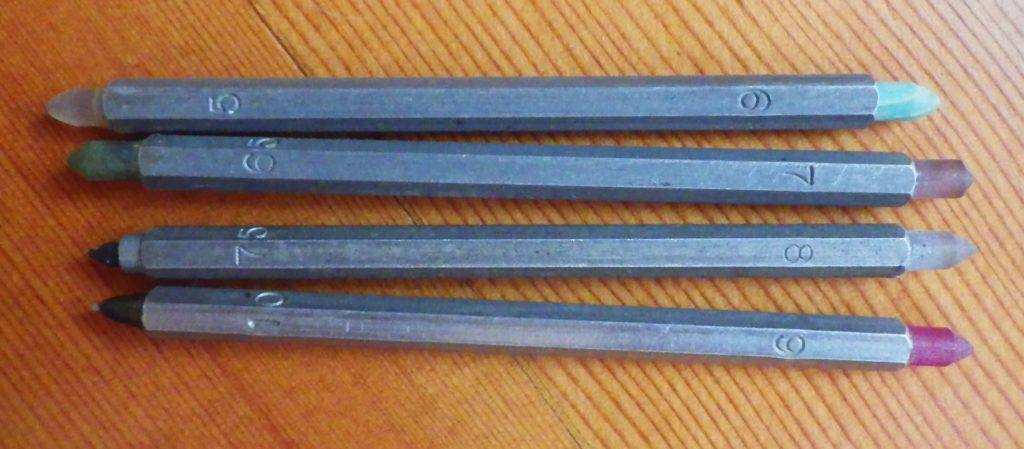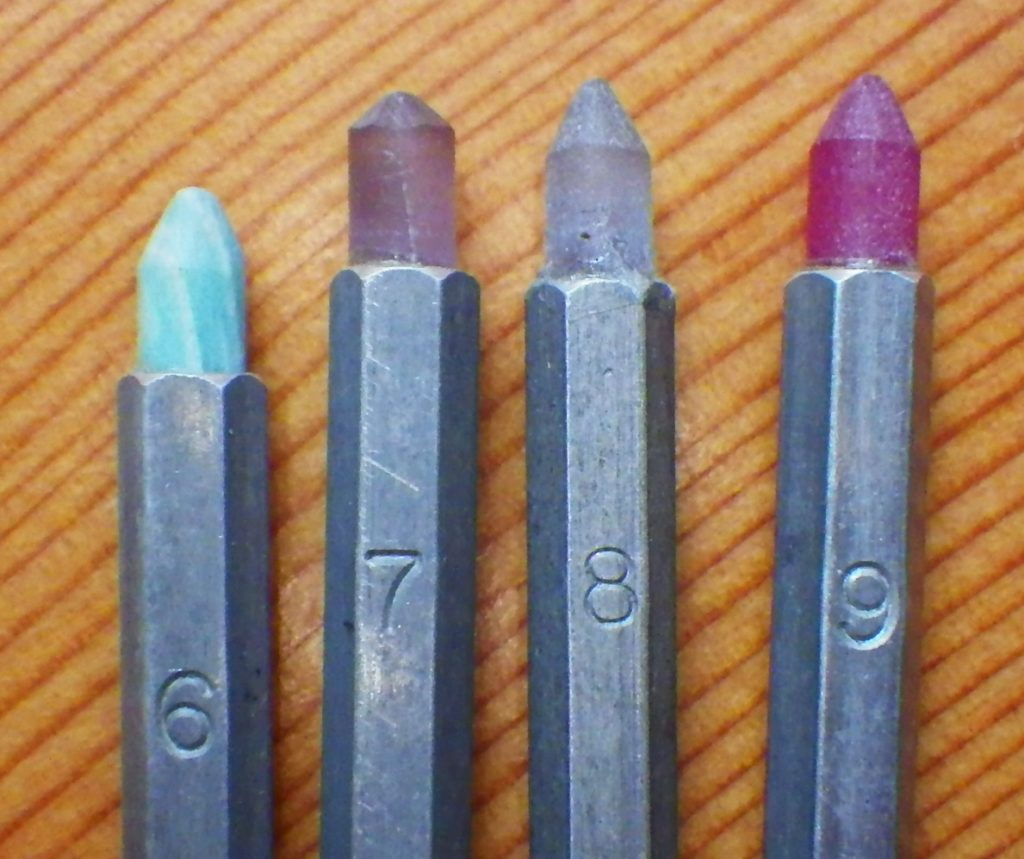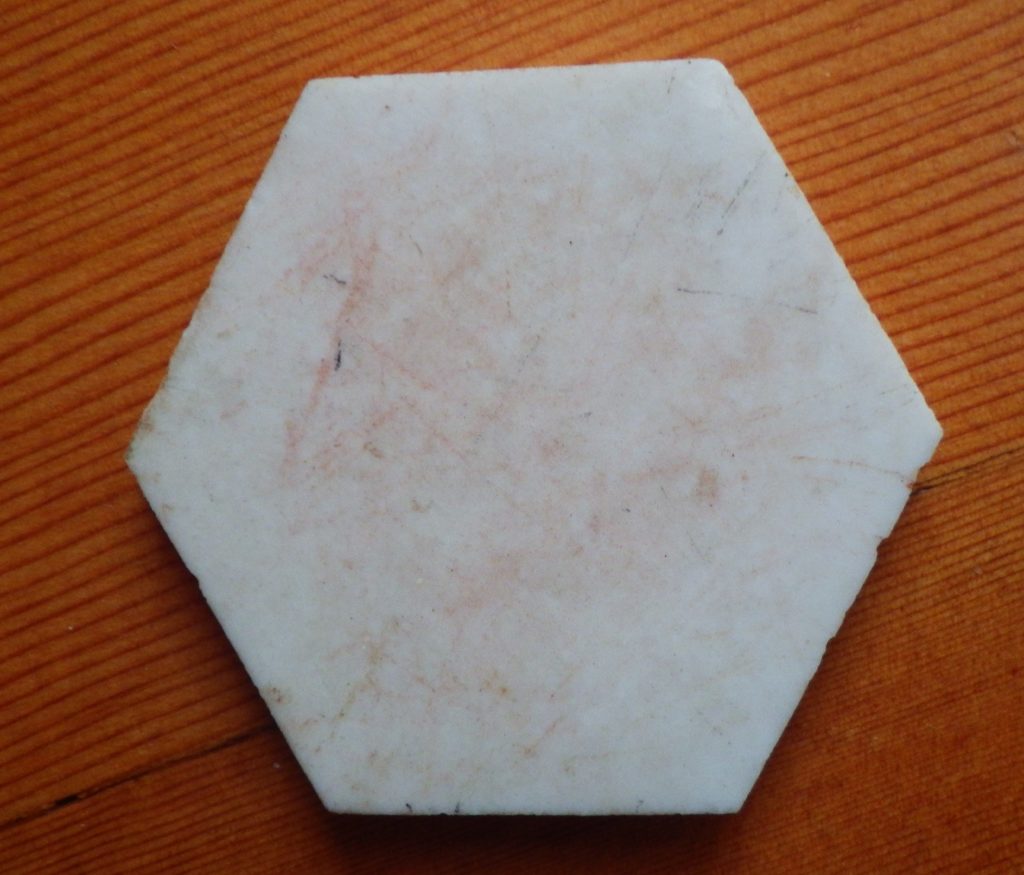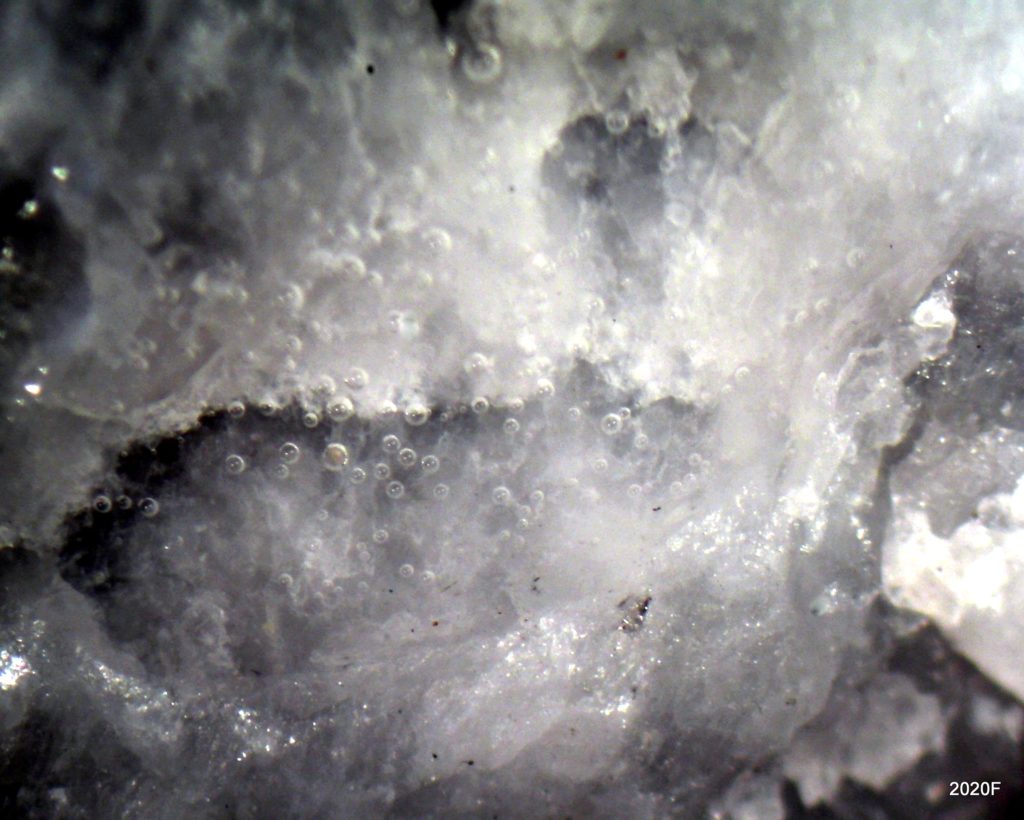| Mineral Identification |
A full description of identifying minerals and rocks is beyond the scope of our website, however we can give an overview and some pointers. There are many resources online (see our links page) , in public libraries, and in the club’s library. For example, you could check the book, The Practical Geologist, out of the club’s library.
The basic properties of a mineral that lead to its identification are hardness, streak, specific gravity, fracture and luster. If the mineral is also a crystal, then the crystal’s shape is also useful. Minerals that don’t have an obvious crystalline shape are called “massive”. Many minerals, like quartz, can be found in both crystal and massive form.
Hardness is measured on the Mohs scale as a number from one to ten. Talc is a very soft mineral and represents 1 on the Mohs scale. The hardest known mineral, diamond, represents 10 on the scale. A mineral of a certain hardness will scratch a softer mineral and in turn will be scratched by a harder mineral.
Hardness test kits are available to give you a range of testability for the harder minerals. A pointed specimen of a mineral is mounted into a metal holder and the holder is marked with the Mohs hardness number. If you don’t have such a kit, then it is practical to use a pocketknife blade whose hardness is usually 5.5. A steel file represents hardness of 6.5.


Hardness Testers marked with the MOHS numbers
Streak is a test of a mineral’s composition. You drag the specimen over an unglazed white ceramic tile to get a streak of powder. The color of this powder is a guide to its composition. Most mineral guidebooks include the streak color as part of the diagnostic clues for a mineral.
Specific gravity measures a mineral’s relative density. Most rockhounds don’t usually go through the process of weighing a specimen and weighing the amount of water that specimen displaces. In general, minerals with a lot of metal content have a much greater specific gravity than non-metallic minerals.

Ceramic Streak Plate
Fracture is a description of how a mineral will break. Some break randomly, some break along distinct cleavage planes. The conchoidal fracture is the type most people are familiar with having seen it in window glass when a break leaves a concentric pattern of ridges.
Luster refers to how a fresh surface of a mineral reflects light. Most people are familiar with the metallic luster. Serpentine may have a greasy luster.
Systems of crystal shapes are complicated, so it’s best to read a variety of sources for their descriptions. Basically crystal shapes are defined by the number of axes of symmetry and the angles between the axes. The six systems are cubic, hexagonal, tetragonal, orthorhombic, monoclinic and triclinic. There is an illustration and definition for each system in “The Practical Geologist” book.
The Acid Test– Acids will dissolve calcium carbonate so you can easily test carbonate minerals (e.g. Calcite) or rocks (e.g. limestone). Drop some vinegar (which contains acetic acid) onto a flattish surface of your specimen. Use your hand lens to see if there are any bubbles forming in the vinegar as the acid dissolves the calcium carbonate, releasing carbon dioxide. Since the vinegar is a rather weak solution of acetic acid, you may need to repeat your test, with stronger light and a more powerful magnification, if you don’t see bubbles the first time.

Calcite bubbles from vinegar
